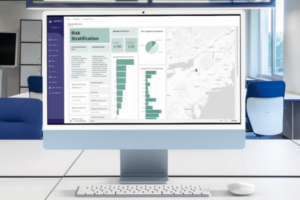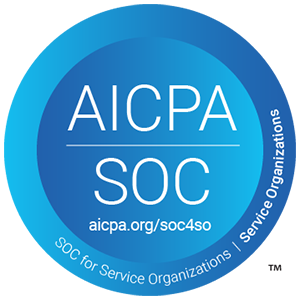Imagine if tracking quality measures could shift from being a burden to becoming a powerful tool for enhancing patient care. With Sevida, healthcare teams are empowered to succeed—effectively meeting critical benchmarks, closing care gaps, and delivering proactive, impactful care that truly elevates patient outcomes.
You’ve heard about these measures before and know about gaps in care, but what sets Sevida apart is that we don’t just show you who is and is not meeting a measure, we go further, explaining why. Typically this requires a data analyst to pull a report, but we give this to you with a simple click.

What are HEDIS Measures?
Quality measurement is critical for ensuring optimal patient outcomes and supporting value-based care agreements. HEDIS, which stands for Healthcare Effectiveness Data and Information Set, is a widely used performance improvement tool. HEDIS measures are governed by the National Committee for Quality Assurance (NCQA), and serve as industry benchmarks for evaluating the quality of care delivered by healthcare organizations.
HEDIS measures encompass a wide array of health services, including preventive care, chronic disease management, and population health outcomes. These standardized metrics allow healthcare organizations to assess performance across various quality domains—from preventive screenings to chronic disease control. HEDIS aims to ensure that patients receive timely, effective, and evidence-based care.
Benefits of HEDIS-Aligned Population Health Management
- Risk Stratification: HEDIS measures can assist in identifying high-risk populations, enabling targeted interventions and resource allocation that can lead to better health outcomes and reduced hospital admissions.
- Improved Patient Outcomes: Adherence to HEDIS measures ensures patients receive evidence-based care, leading to fewer complications, improved chronic disease management, and better overall health outcomes.
- Increased Efficiency and Cost Savings: Real-time monitoring of HEDIS measures reduces administrative burden, streamlines workflows, and eliminates redundant patient interactions, lowering healthcare costs and improving resource efficiency.
- Improved Public Health Outcomes: By focusing on preventive care and chronic disease management, HEDIS measures can contribute to broader public health initiatives, leading to healthier communities and reduced healthcare disparities.
The Role of Sevida in HEDIS Compliance and Quality Management
Sevida leverages a unified framework that abstracts the complexity of each HEDIS measure specification and delivers an easy-to-use interface. The platform’s analytics dashboards provide a comprehensive view of HEDIS measures, identifying care gaps and implementing actionable insights. Member scores, demographic summaries, and data visualizations enable care teams to make informed decisions.
For instance, a HEDIS analytics dashboard for Child and Adolescent Well-Care Visits (WCV) monitors the percentage of members aged 3-21 who have had at least one comprehensive well-care visit with a primary care provider or OBGYN during the year. Well-care visits assess physical, emotional, and social development, serving as crucial touchpoints for health screenings, vaccinations, and developmental guidance. The WCV dashboard empowers care teams by displaying compliance data for each member, helping focus outreach efforts on patients due for visits and supporting a proactive approach to population health.
Similarly, HEDIS dashboards also provide visibility into various childhood immunizations, such as MMR, DTaP, and hepatitis B, tracking the percentage of children who receive required vaccines by age two. Timely monitoring of these immunizations ensures protection against preventable diseases, supporting a healthier start in life.
The Explainability section of Sevida’s HEDIS dashboard provides AI-generated recommendations to bridge care gaps, explaining why a patient may not meet specific criteria and suggesting personalized next steps. Contextual insights, such as historical patterns of missed appointments, guide care teams in tailoring communication strategies. These recommendations can be translated into tasks assigned to the care manager, complete with due dates aligned with organizational workflows, facilitating efficient and coordinated patient care.
Quality Measure Customization
Beyond HEDIS measures, Sevida enables custom quality measures tailored to track metrics that align with an organization’s unique patient populations. This flexibility supports organizations transitioning to value-based care, allowing them to monitor quality indicators essential to their specific patient outcomes.
Conclusion
In an industry where quality measures like HEDIS are vital to evaluating care performance, Sevida offers a comprehensive solution for healthcare organizations. By integrating data management, event-driven workflows, AI-powered insights, and robust analytics, Sevida simplifies HEDIS compliance, ensuring patients receive the quality care they deserve. With Sevida, healthcare organizations can embrace a proactive, population-centered approach to health management—ultimately reducing costs and improving health outcomes.

